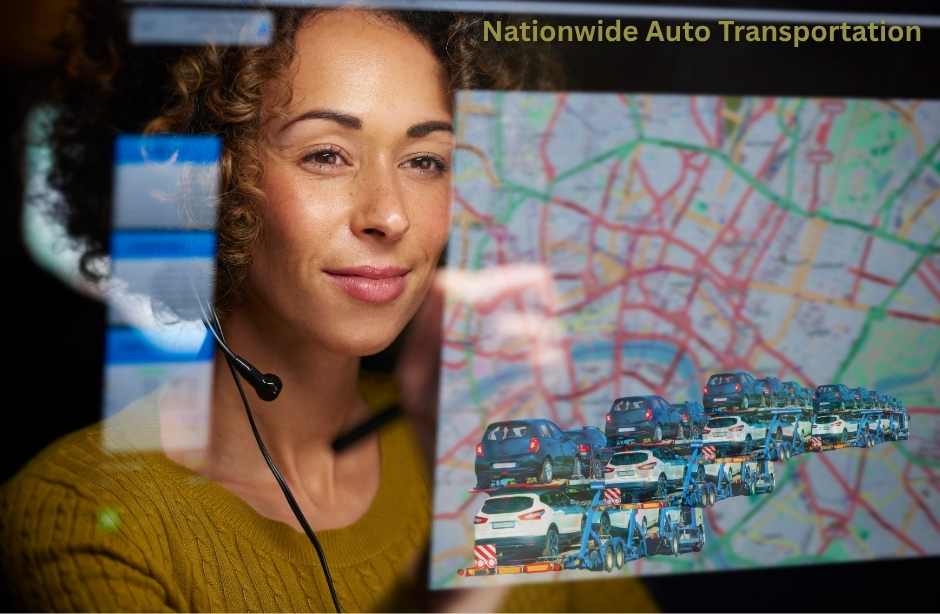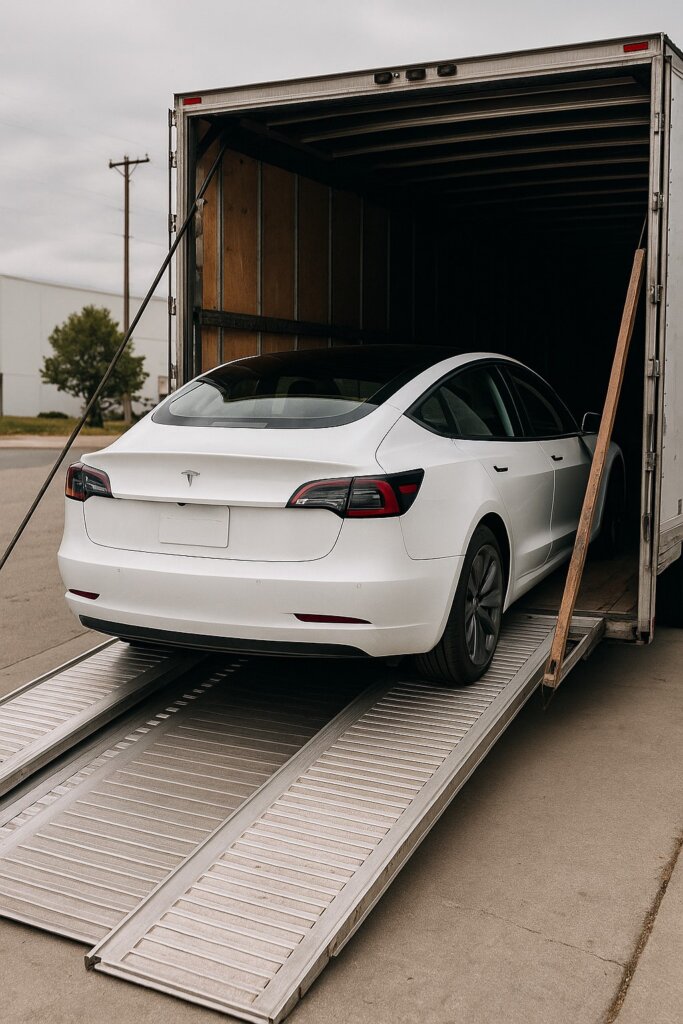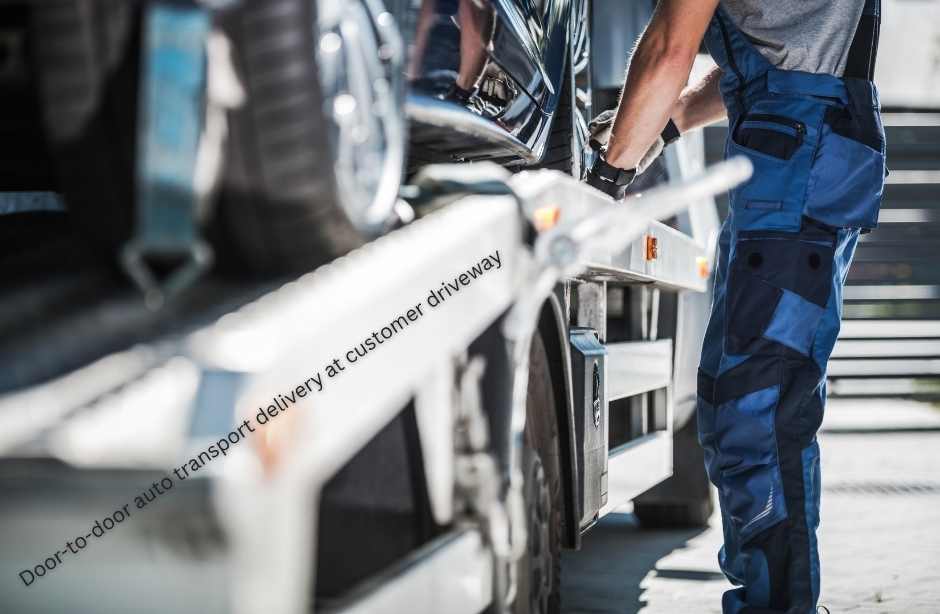
Reading Time: 5 minutes
Transport Industry Trends 2025 | What Do They Mean for Car Shipping Customers

Vehicle transport industry trends are moving faster than ever in 2025. From advanced automation to growing EV demand and the rise of digital freight platforms, trends are shaping how—and why—customers ship vehicles.
At Nationwide Auto Transportation, we’ve helped thousands of Americans navigate their auto transport needs. Whether you’re a classic car owner, college student, EV buyer, or military family, these trends affect how your vehicle moves across the country.
Get ahead of the curve with key insights into how AI, EVs, logistics tech, and consumer expectations are transforming vehicle transportation — and what it means for your next auto shipment.
Let’s break down the top transport trends, and how they connect to smarter, safer, and faster car shipping services.
🤖 Embracing AI and Automation in Auto Transport
Faster, Smarter Dispatching
Artificial Intelligence and automation are revolutionizing transport industry trends. Transport companies now use modern dispatch platforms applying machine learning to:
- Optimize shipping routes
- Predict vehicle maintenance needs
- Improve load planning
- Minimize fuel consumption and delivery times
- Reduce idle time

24/7 Tracking & Support
AI-powered platforms allow for same-day dispatching, dynamic pricing, and real-time GPS tracking. Our instant quote calculator and 24/7 smart agent support give you peace of mind with transparent, trackable shipping.
Result? Less friction. More peace of mind.
⚡ The Electric Vehicle Boom is Changing Everything
Transport industry trends indicate that: EV Transport is Rising Fast—And Requires Special Care
EV Sales = EV Shipping

EVs accounted for nearly 10% of all U.S. new car sales in 2024. That means more customers are:
- Buying EVs online across state lines.
- Needing safe, specialized shipping.
Safe Handling for Sensitive Batteries
EVs are heavier. Their batteries need care. That’s why we offer:
- Enclosed Auto Transport for Teslas, Rivians, Lucids, and other premium EV brands.
- Trained drivers who know EV specs and tie-down protocols.
Shipping an EV? Use a carrier that’s ready for the tech revolution.
🛡️ Rise of Smart, Classic, and High-Value Vehicle Shipping
Your Car Deserves VIP Treatment
Today’s transport industry trends say cars are smarter—and more expensive. Whether it’s a Corvette Z06 or a rare collector’s car, smart customers are opting for:
- Enclosed shipping for protection from weather and road debris.
- Hydraulic lift gates for low-clearance vehicles.
Not Just Luxury | It’s About Trust | Transport Industry Trends

Choosing the right method matters. Transport industry trends show that classic car auto transport is on the rise. This means your transport company should know how to handle rare builds (like the Batmobile)–and sensitive components.
Whether you’re shipping a vintage Porsche or a brand-new Corvette, enjoy safe, secure, and insured delivery. Learn more in our guide to reliable vehicle transportation.
We make it easy—get white-glove service from pick-up to delivery.
📦 Growth of Online Car Buying + Door-to-Door Convenience
Online Car Buying Fuels Door-to-Door Delivery
Welcome to the “Amazon of Car Sales”
The “Amazon effect” has reached car sales. You can now buy a car online, sight unseen. Platforms like Carvana and Cars & Bids are booming—and with them, the need for:
- Long-distance shipping
- Seamless door-to-door auto transport
- End-to-end transparency
Simple and Reliable
Door-to-door isn’t just convenient. It’s smart. At Nationwide Auto Transportation, we meet you where you are: your driveway, workplace, or dealership lot. Request a quote today to get started.
Whether you’re a dealer, private buyer, or online seller, our team handles the heavy lifting.
Military & International Relocations Surge
PCS Moves? We’ve Got Your Back
According to the latest transport industry trends, thousands of U.S. military families face PCS moves annually. And they all need trusted car transport. We offer:
- Base-to-base military car shipping.
- Quick booking with military discounts for service members.
- Help with required paperwork.
For international moves, our team handles port-to-port shipping and all customs documentation. Learn more at USA.gov.
Going Overseas?
We also support international car shipping with:
- Port-to-port services
- Export/import documentation
- Transparent pricing and timelines
Global move? Local service. Nationwide means everywhere.
Transport Industry Trends Say Customers Expect More — and Better — in 2025
Customer Expectations Are Sky High!
Transparent Quotes. Real-Time Tracking.
Today’s auto shipping customers are informed. They check BBB ratings, read Google reviews, and expect:
- Upfront pricing (no hidden fees)
- Real-time updates
- Professional support
- 24/7 access to our FAQs
Our shipping experience is designed with Experience, Expertise, Authoritativeness, Trustworthiness in mind. With that, read our helpful content like seasonal auto transport tips.
Eco-Friendly Shipping Gains Ground | Transport Auto Trends
🌱 Green Transport & Eco-Efficiency
Emission Standards Are Rising
Sustainability is no longer optional. Regulations are pushing fleets toward:
- Low-emission diesel
- Biodiesel & renewable fuel
- Electric carrier trucks (coming soon!)
Want Greener Shipping?

Choose:
- Open car transport (up to 10 cars per carrier = high efficiency)
- Regional vs. cross-country hauls when possible
- Carbon-neutral offset options
Better for the planet. Better for your wallet.
We reduce our environmental impact through load optimization and carbon offset options. Learn more from the U.S. Department of Energy.
Your Next Steps for Easy, Reliable Shipping
📲 How These Transport Industry Trends Fit Into Your Car Shipping Journey
You Start Here:
- Visit our website
- Use our instant quote calculator
- Pick your method: open, enclosed, express
- Schedule a pickup time that works for you
We handle everything from that point forward.
You End Here:
- A vehicle delivered to your door
- On-time. Insured. Clean.
- Backed by a top-rated team
These transport industry trends support that goal. And our mission is to make the process easy, educational, and effortless.
We handle the logistics—you enjoy the convenience.

💬 Transport Industry Trends Real Talk
What Questions Do You Still Have?
We’ve got you covered with:
- FAQs
- Shipper tips
- Help choosing open vs. enclosed
Still not sure? We’re happy to talk through your route, pricing, or concerns.
🎯 Ready to Ship? Get a Free Instant Quote
It’s 2025. The car shipping process should be fast, transparent, and tech-forward.
👉 Click below to get a free instant quote—no phone call required.
🔹 Get Your Car Shipping Quote Now 🔹
Or talk to a real person at 800-311-7073 — we’re here for you.
FAQs | 2025 Transport Trends for Car Shipping
What are the key trends in the car transport industry for 2025?
AI integration, electric vehicle growth, online car buying, and sustainability are leading trends impacting how cars are shipped in 2025.
How does AI improve vehicle shipping services?
AI enhances route planning, reduces delivery delays, and offers real-time updates and support for a more seamless customer experience.
Is door-to-door auto transport worth it?
Yes. It offers convenience, time savings, and direct service without having to meet at terminals.
How do I ship my electric vehicle safely ?
Use enclosed auto transport with trained EV handlers and carriers that understand battery safety and vehicle weight distribution.
Are there discounts for military vehicle shipping?
Yes. We offer special pricing and services for active-duty and retired military personnel during PCS or base relocations.
Is green vehicle shipping available?
Absolutely. Choose fuel-efficient carriers, carbon-neutral offsets, and regional shipping for a reduced carbon footprint.
How do I get started with car shipping?
Get a free online quote, select your method, and we’ll take care of the rest.



